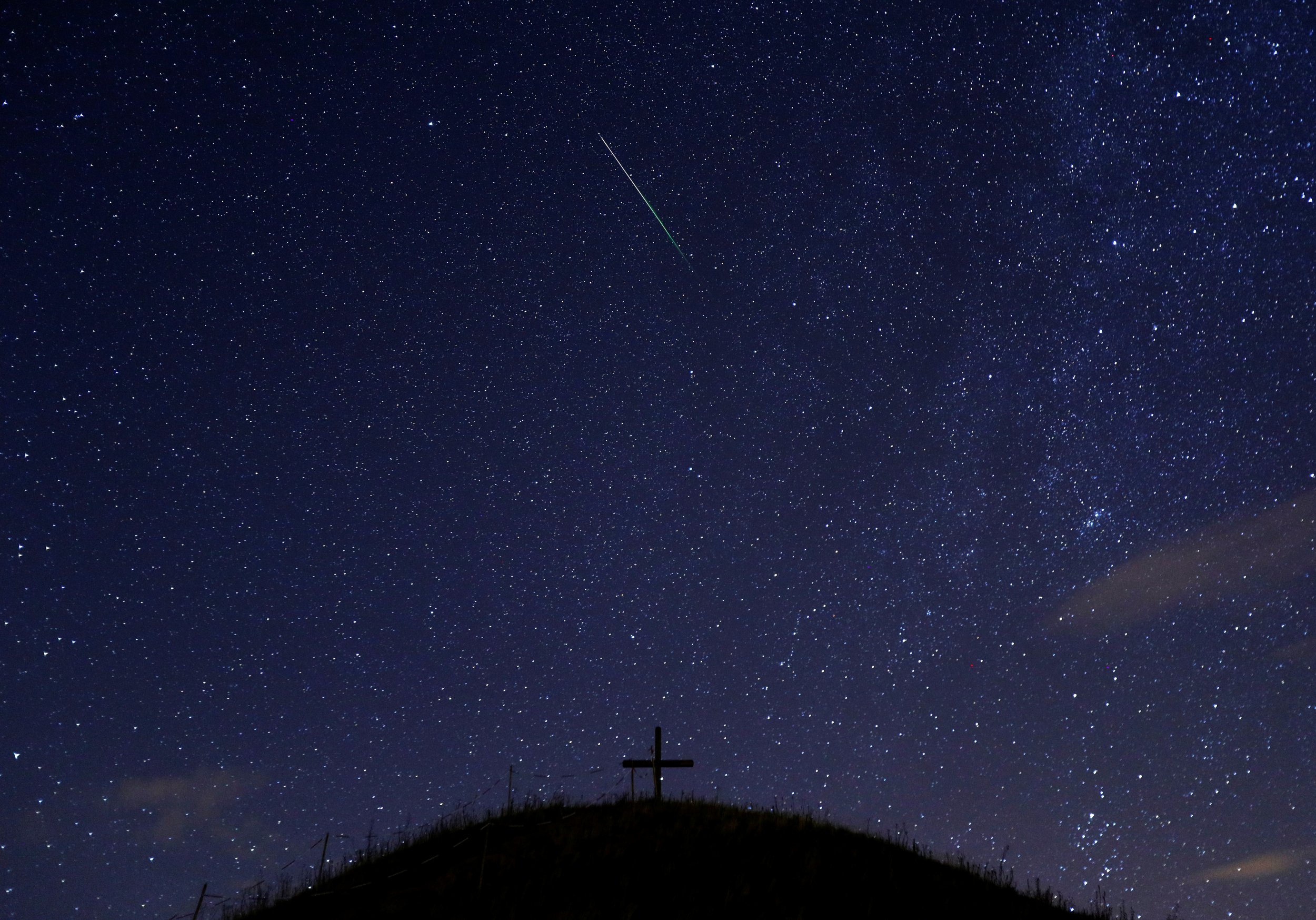
Wherever you're reading this, if you can get somewhere dark late on Saturday night, you'll be able see the remains of Halley's comet shooting through the sky. The Orionid meteor shower is expected to peak before dawn on Sunday morning. And, as NASA's Bill Cooke told Newsweek, it'll be visible from anywhere on Earth.
"The Orionids are very egalitarian" he said, "It doesn't matter where on earth you are you can pretty much see them." The shower 'radiates' from Orion's belt, which is just over the equator, making it visible to most of the planet.
What the people of Earth will see this Sunday is the remains of Halley's comet from at least two times before it passed into Earth's orbit. "So you're stuff kicked off 150 years before 1985 which would be in the 1830s," Cooke said.
And viewing conditions are better than in recent years. The night will be free of interfering moonlight.
"If you go out on the morning on the 22nd before the dawn and you lie flat on your back you may see as many as 20 orionids per hour," Cooke said.
Like any other comet, Halley's comet is, as Cooke describes, a "big, icey dirtball." And as this icey dirtball moves around the sun, it leaves pieces behind. Once those pieces get close to the heat of the sun, the ice around it is heated from solid to gas, and all those pieces of dirt freeze as a result.
That is how you get a meteor shower.
According to Cooke, the trail of meteors behind Halley's Comet is tugged on by Jupiter's gravity, so its orbit changes with time and causes the rate of meteorites to vary along a cycle.
So some years the Orionid consists of 70 or 80 meteorites per hour. Other years it's as low as 10 to 15. This year, we're on the upward leg of the cycle.
But that doesn't mean Sunday will bring dazzling fireballs, Cooke says. What you can expect is a "steady stream of bright meteors on an early fall morning before dawn," Cooke says. "it will be a nice show, but it won't knock your eyes out."
He also cautions that this isn't the kind of meteor shower you can see out the window, or, in fact, any area with streetlights or other kinds of light pollution. "If you're out in the country you'll see orionids, but if you're in Nashville coming out of a bar," or camping out in Central Park, "you won't see anything."
While the moonlight should be right, the meteor shower won't be so easy to see in the middle of a city. City dwellers will have to wait for the Geminids in December before they can watch a meteor shower from home.
NASA won't be broadcasting the event live this year. But if you happen to be stuck in a city or prefer to watch from the comfort of your home, SLOOH has you covered with its livestream.
If you do venture out, though, make sure to bring a coat. Odds are, if you're reading this, it'll be cold when the shower peaks. And, as Cooke warns, make sure to watch closely.
"If you blink, you won't see them."
Uncommon Knowledge
Newsweek is committed to challenging conventional wisdom and finding connections in the search for common ground.
Newsweek is committed to challenging conventional wisdom and finding connections in the search for common ground.
About the writer
Joseph Frankel is a science and health writer at Newsweek. He has previously worked for The Atlantic and WNYC.
To read how Newsweek uses AI as a newsroom tool, Click here.








